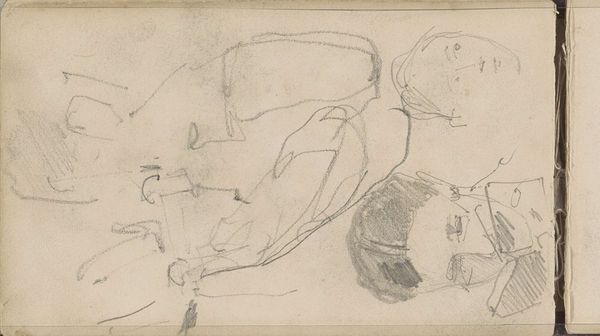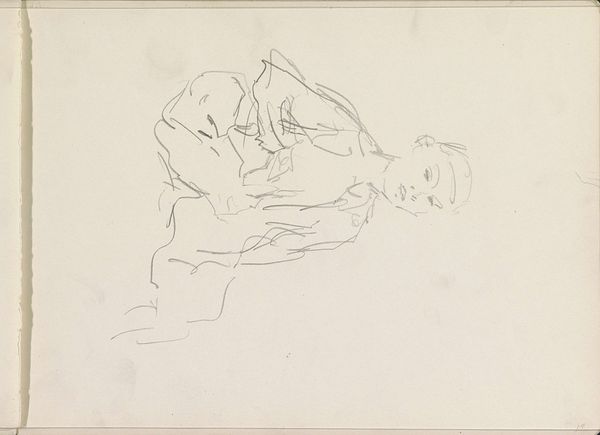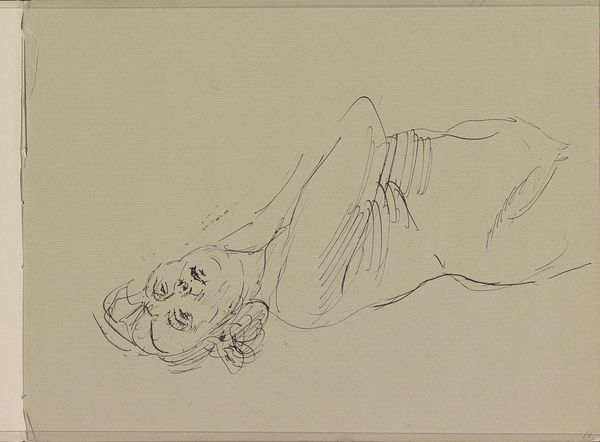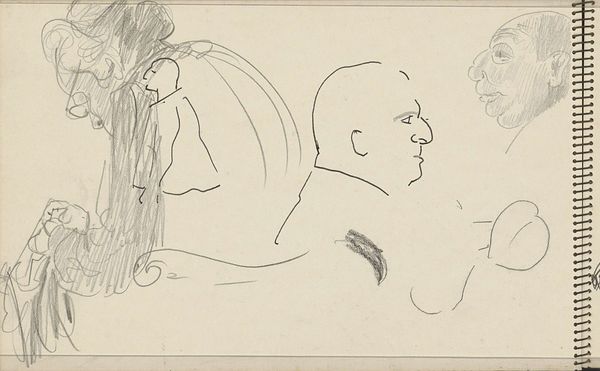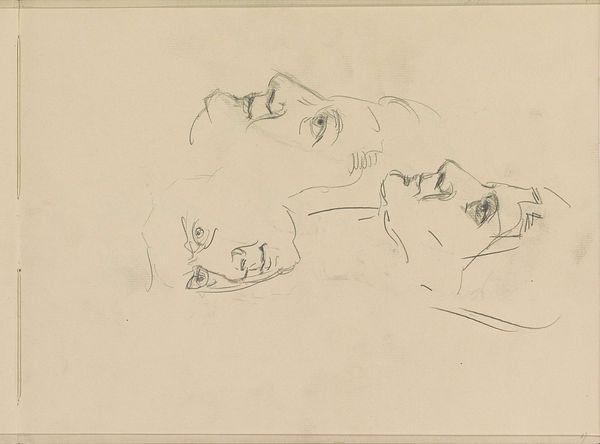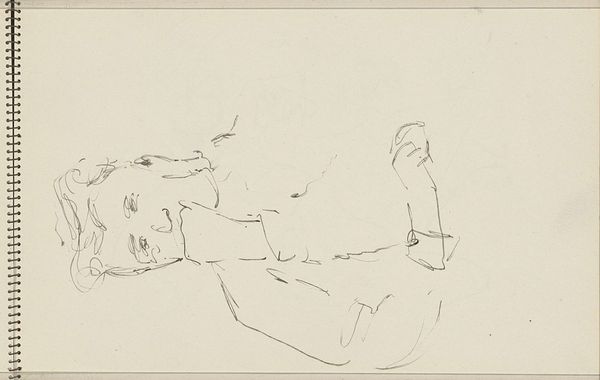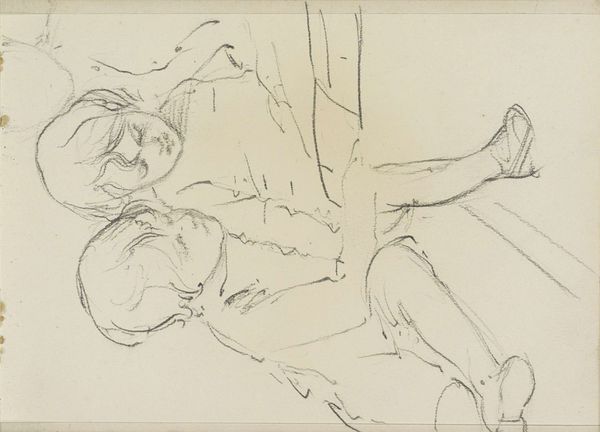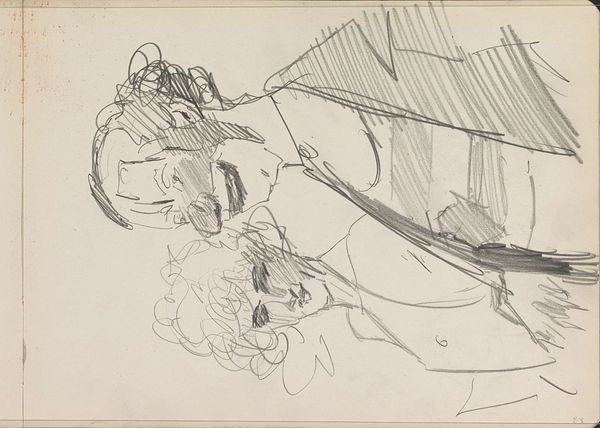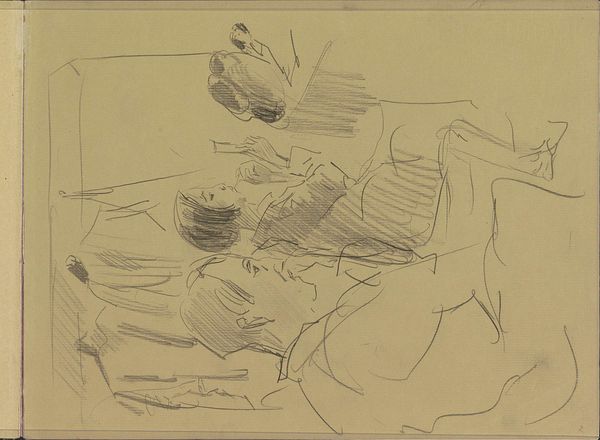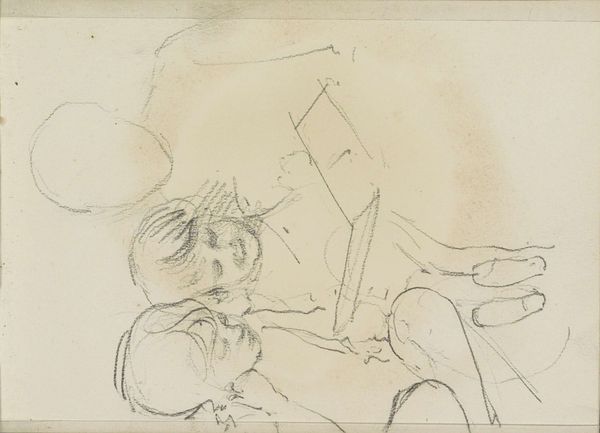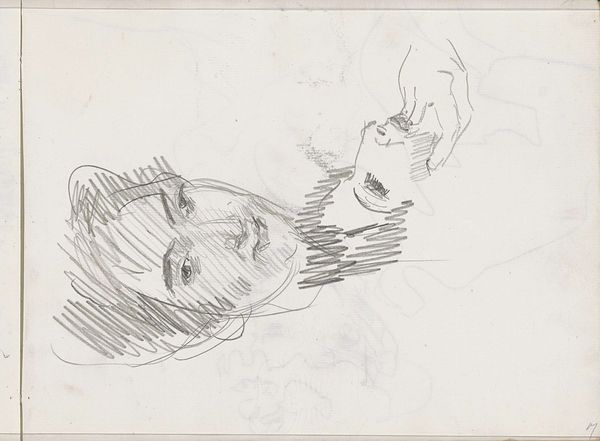
drawing, paper, pencil
#
portrait
#
drawing
#
figuration
#
paper
#
pencil
#
modernism
Copyright: Rijks Museum: Open Domain
Curator: This work here is Carel Adolph Lion Cachet's "Portret van Joanna Lion Cachet-Cordes," created sometime between 1935 and 1940. It's currently held at the Rijksmuseum. Editor: My initial impression is one of fragmentation—ghostly presences sketched fleetingly in pencil on paper. There's a vulnerability in these almost incomplete depictions. Curator: Yes, I see that. The use of pencil suggests impermanence, perhaps studies or preliminary sketches, lending a sense of intimacy, like glimpsing a private moment. Joanna, his daughter, emerges from the page as if through layers of memory. Editor: I’m curious about the paper itself. You can see it’s from a sketchbook, with that spiral binding down the side. This makes it feel even more immediate, more about the process of seeing than about a finished product destined for the art market. Do we know about the availability of such materials during this period? Curator: Indeed. While the cost and quality of artist's materials were fairly stable in Europe in the late 30's, Cachet, born in 1864, would have been used to art created within very stringent parameters of value that shifted drastically into a wider interpretation and access of materials during this shift to Modernism. The raw honesty clashes a bit with older sensibilities, which are still preserved and venerated by his hand and eye. Notice, for instance, how each attempt to represent her offers a different facet of her character, evoking different psychological states and even invoking cultural ideas about family legacy. Editor: The various attempts remind me that drawing is really an act of searching, of trying to grasp something elusive. Looking at the delicate pencil work and knowing this was rendered during a very tense time historically also impacts the feel of the piece. It suggests a search for clarity or perhaps peace amid turmoil. It is so lightly sketched and rapidly created, the lines almost disappear from the paper, like a visual equivalent of trying to capture something that slips through your fingers. Curator: The portrait holds many different emotions, capturing familial continuity during a moment of social uncertainty in history, depicted here with very light means. It encourages the viewer to consider the interplay of historical and emotional meanings contained within it. Editor: Well said. For me, it highlights the inherent connection between material choices and the artwork’s final impact. It emphasizes the beauty in simplicity and in media once relegated as being purely preparatory.
Comments
No comments
Be the first to comment and join the conversation on the ultimate creative platform.

